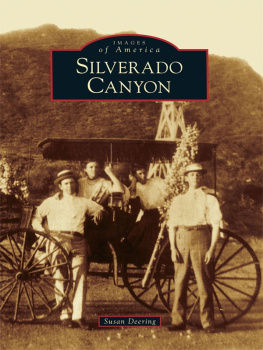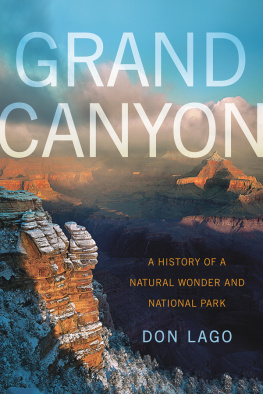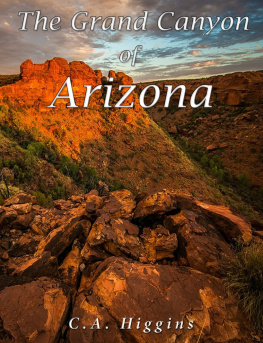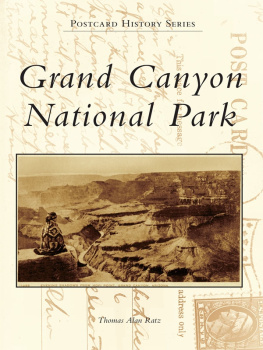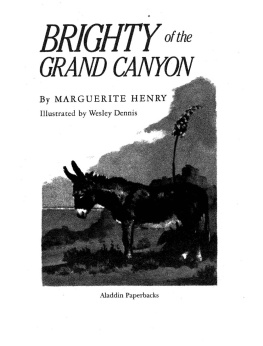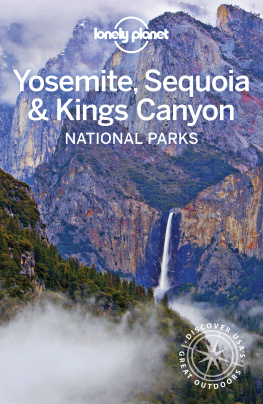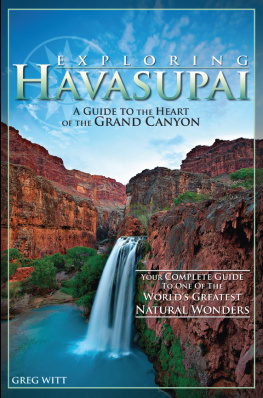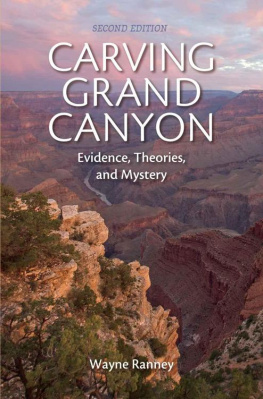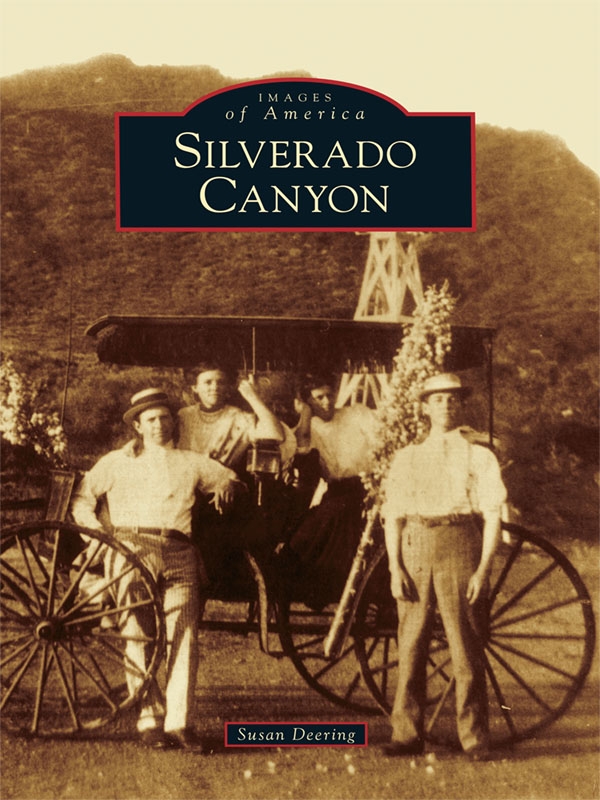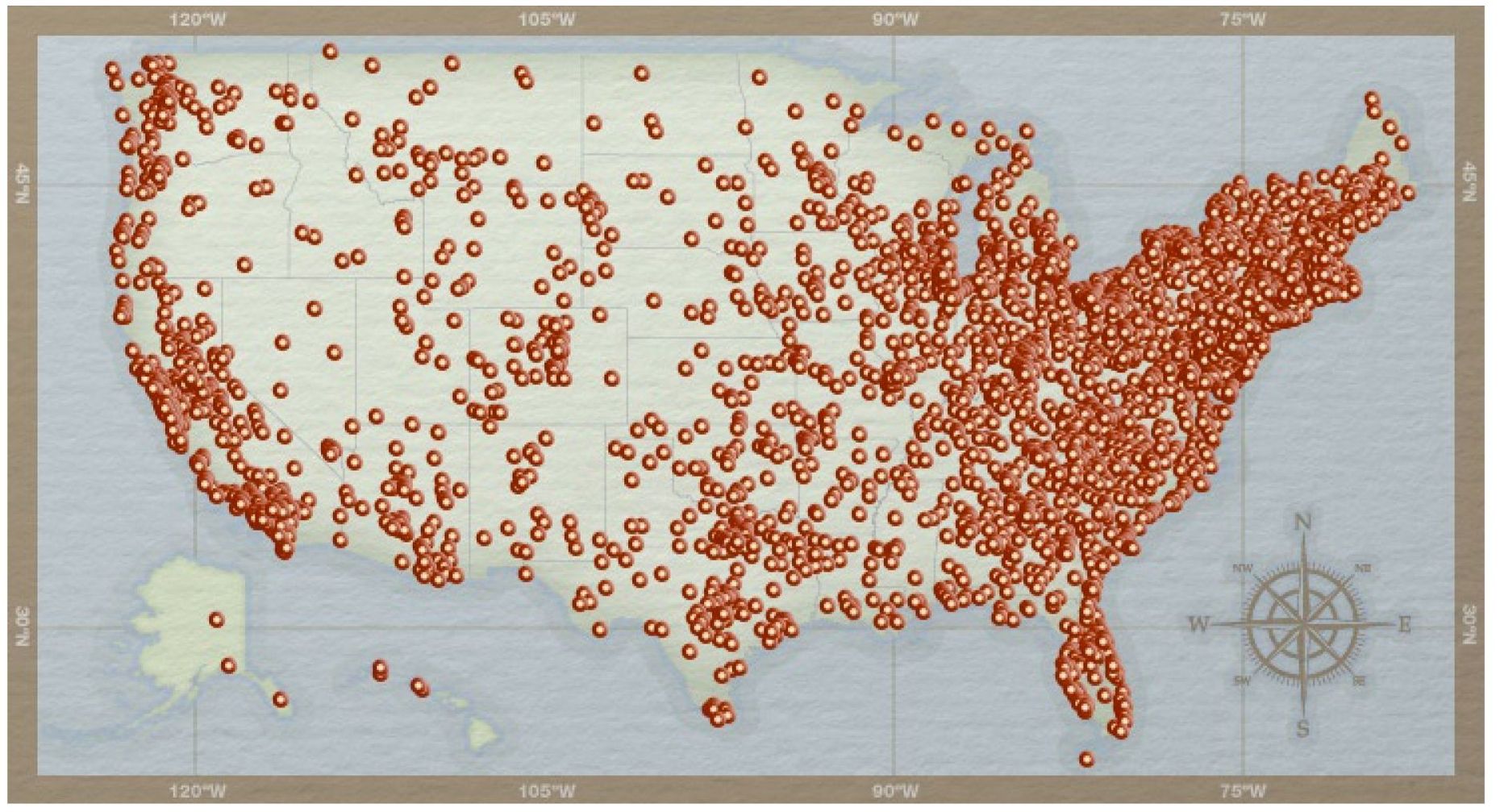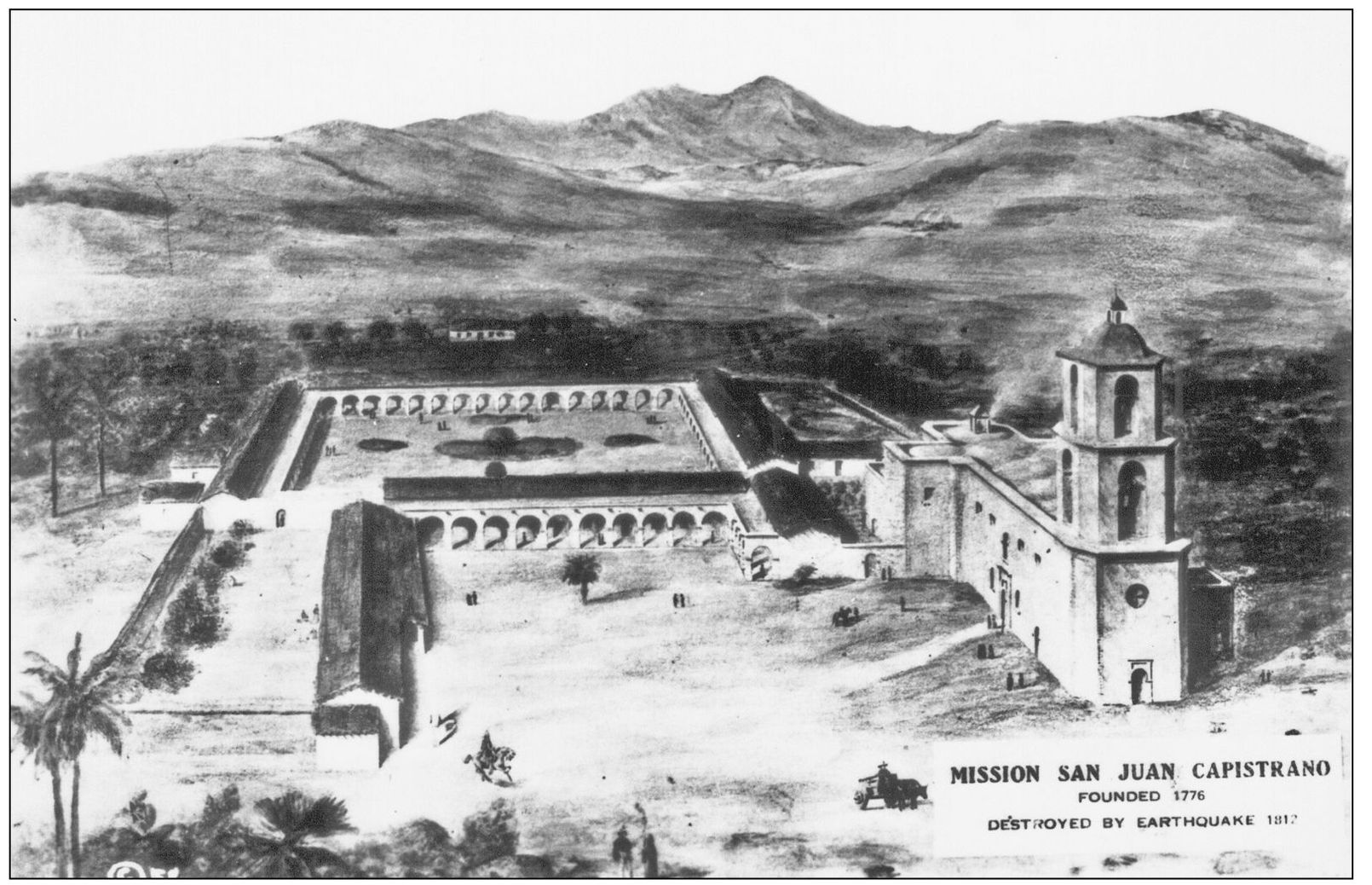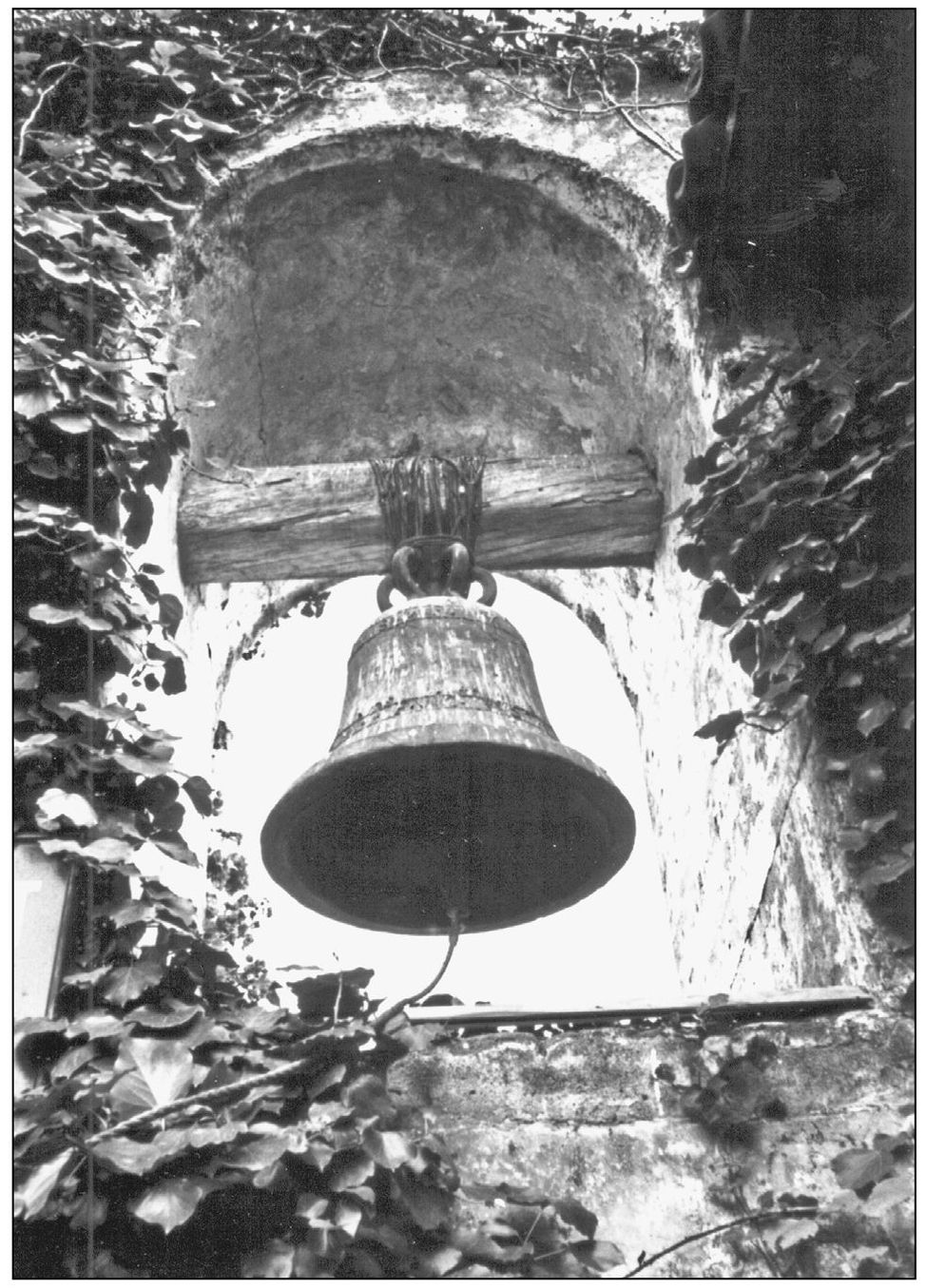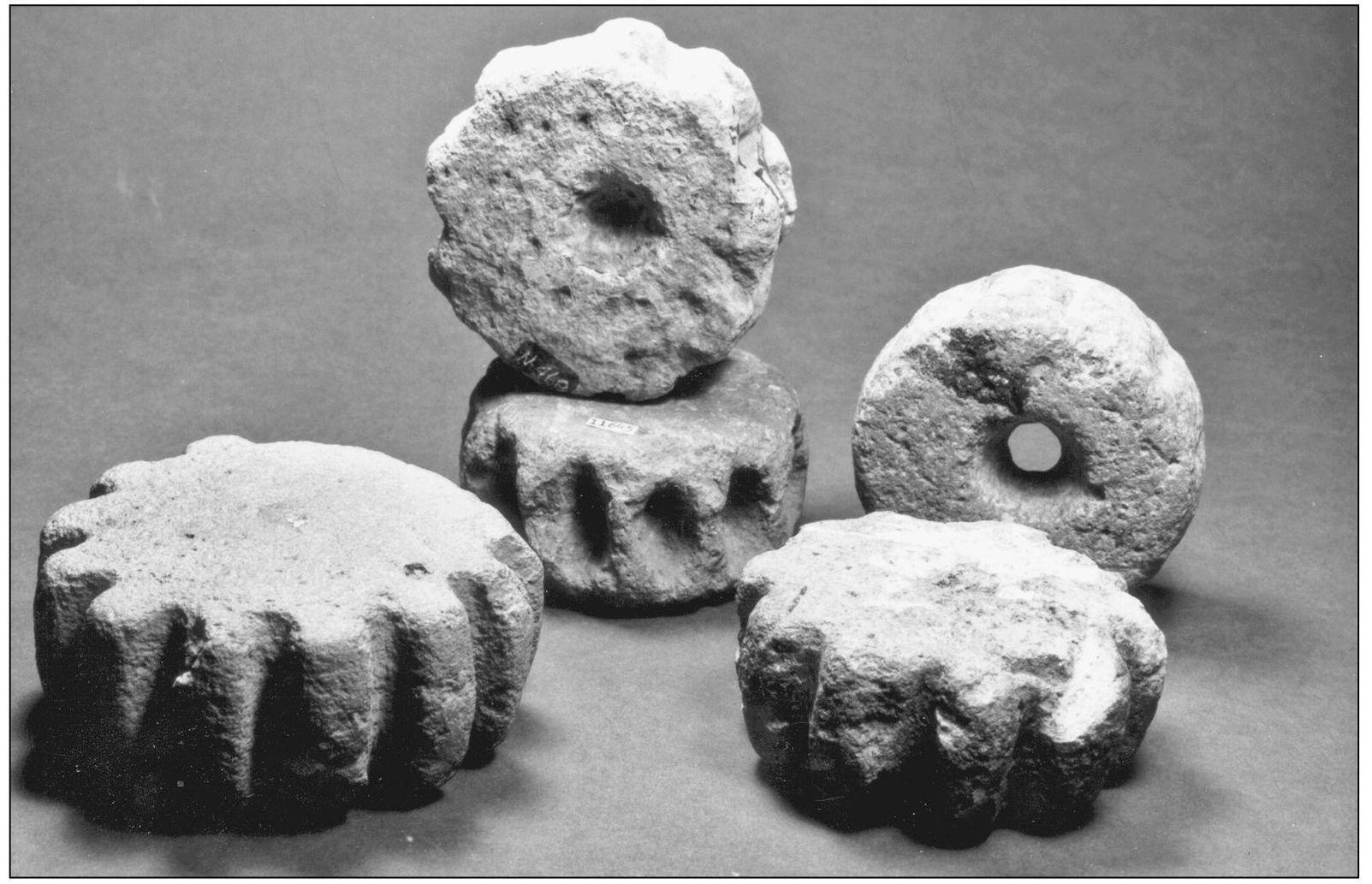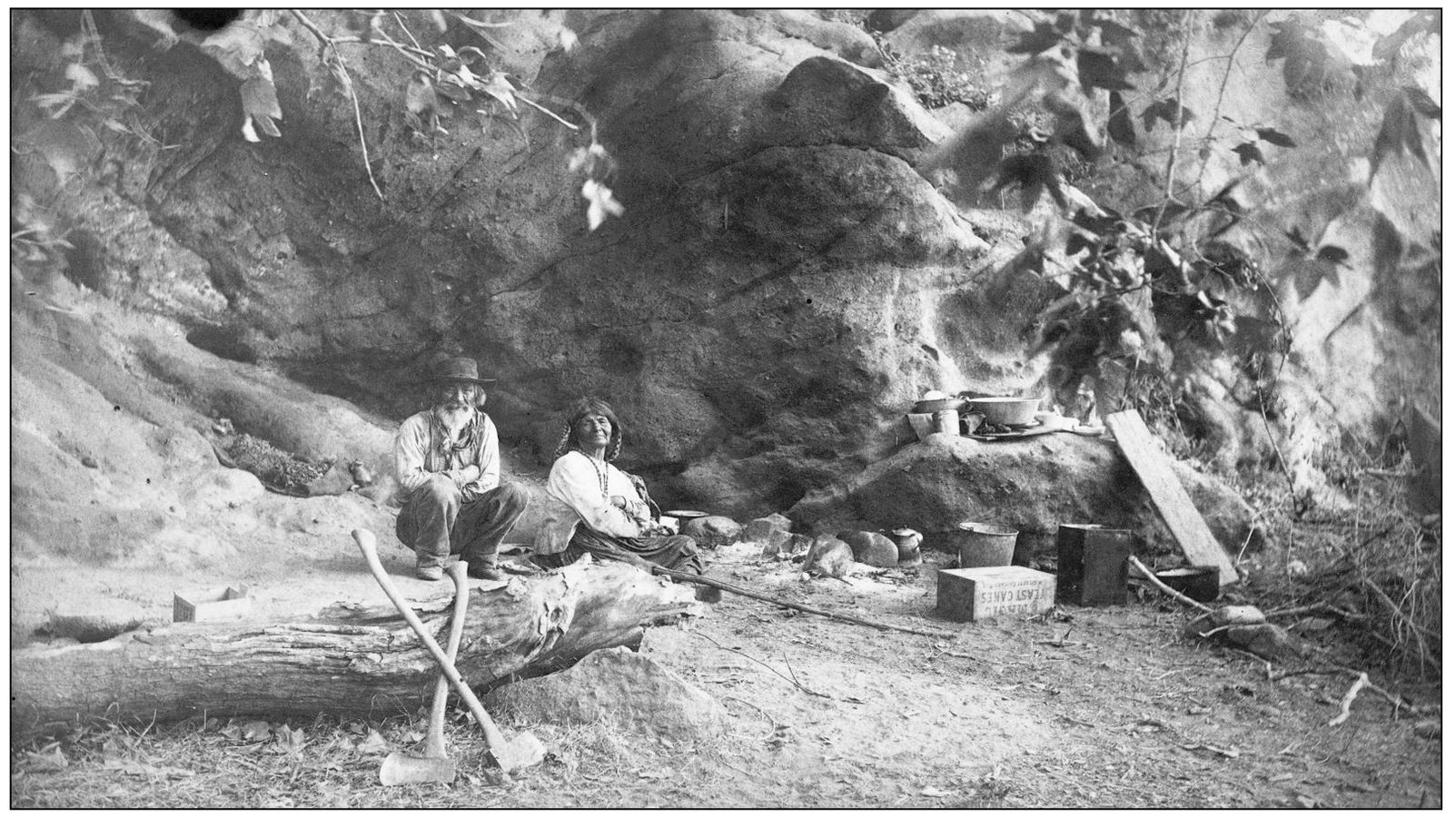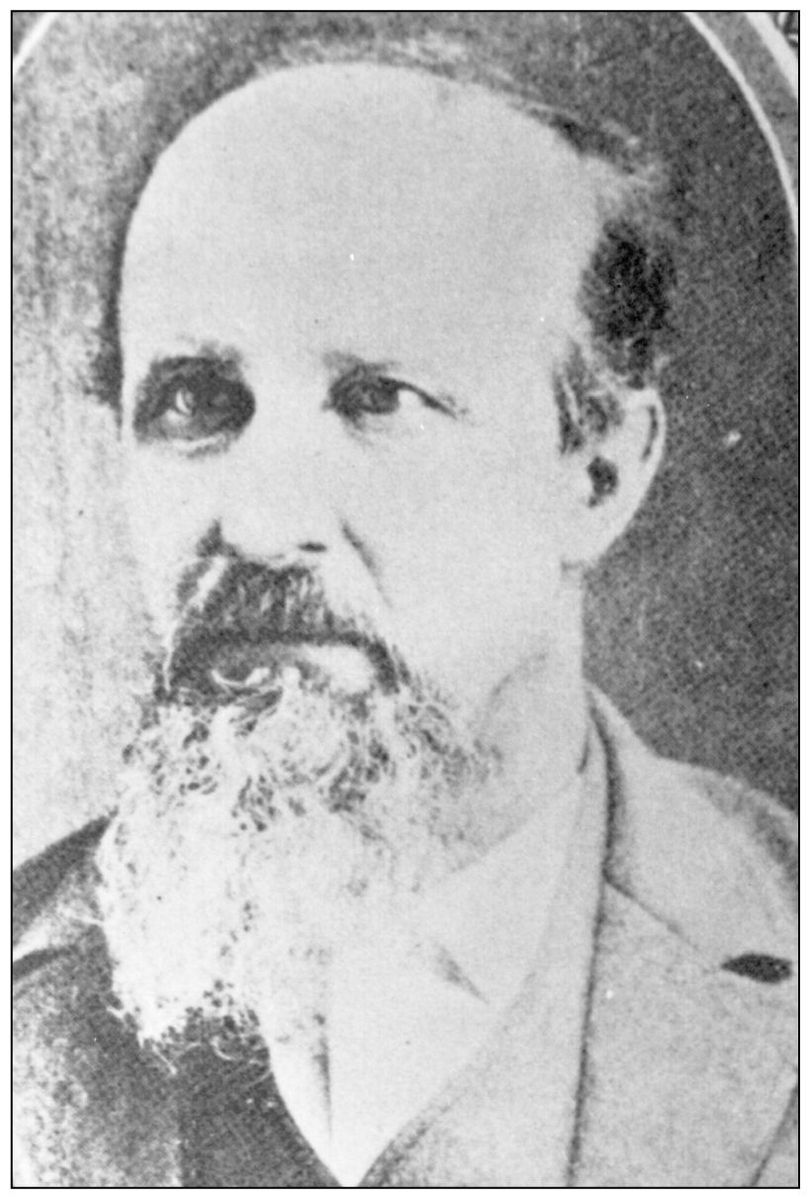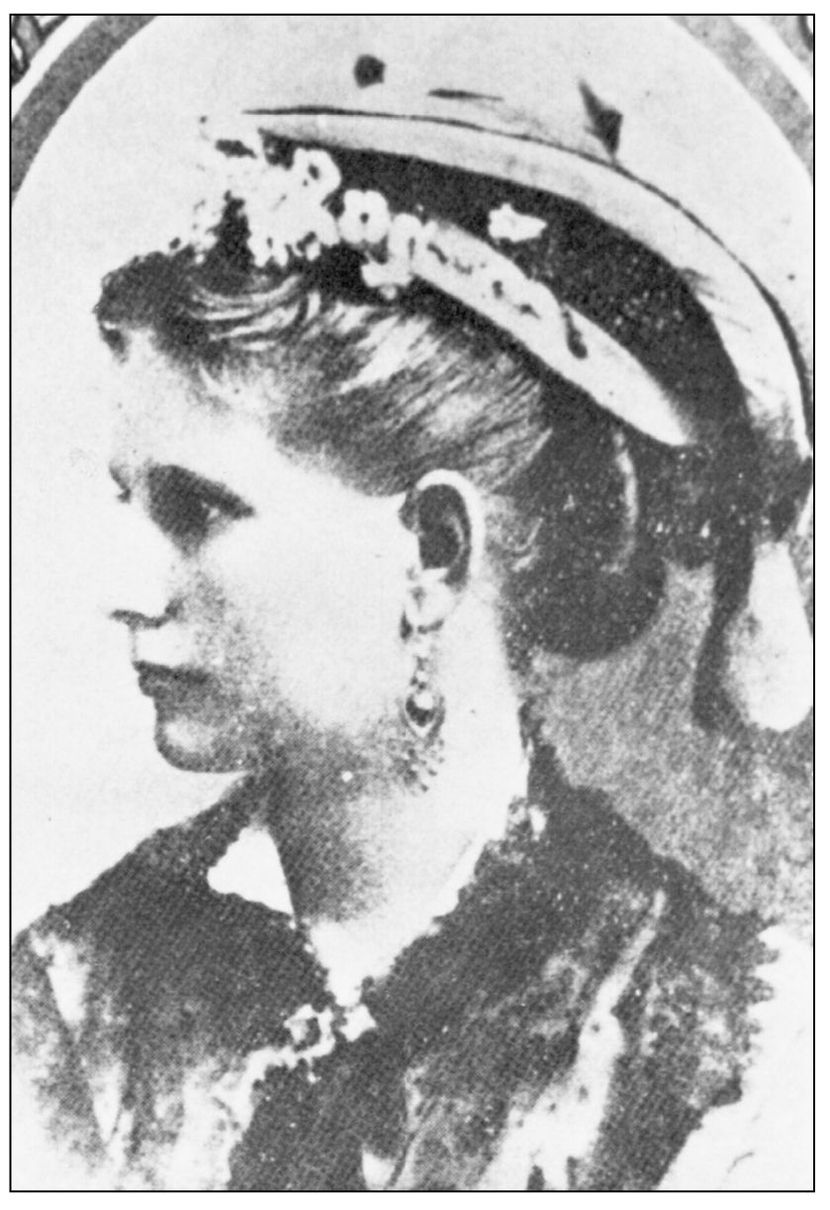One
EARLY SETTLERS
Before Europeans arrived in Silverado, the canyon was home to Native Americans belonging to the Shoshonean linguistic group, now known as the Tongva (or Gabrielino) and Acjachemen (or Juaneno) Indian tribes. Living peacefully off the land, theirs was an idyllic existence. With a plentiful supply of natural resources, the men hunted rabbits and birds, while the women harvested acorns, which grew in great abundance. The Spaniards arrived in 1769 and brought the message of Christianity with them. They established the California missions, and the Native Americans assisted in the construction of Mission San Juan Capistrano. Timbers were hauled from the upper canyon to San Juan Capistrano and were used as joists in the structure. Eventually, the Native Americans were relocated to the missions, and the canyon was left uninhabited.
The first white residents of the canyon were Samuel and Betty Shrewsbury, who arrived in 1876. They cured limestone, raised goats, and made honey. The 1880s in Silverado were a time for pioneers. Hardy souls and those with a sense of adventure and ambition were attracted to the canyon. Most settlers were of European descent and had come west looking toward a future of promise and prosperity. Some of those who arrived then were the Alsbachs, the Shaws, and the Masons. Attracted by the climate, they brought their families, claimed property, and began cultivating the land. The ranches harvested walnuts, apricots, and peaches, constructed apiaries, cured limestone, and raised goats and sheep.
The early settlers established home sites that still exist today.
Mission San Juan Capistrano, the seventh of the California missions, was established in 1775 by Fr. Fermin Lausen. Shortly after his arrival, Father Lausen returned to San Diego, leaving the mission vacant. Fr. Junipero Serra arrived in 1776 and reestablished the mission. The local Native Americans, now known as the Juanenos and Gabrielinos, helped construct the mission buildings and church using timber from upper Silverado Canyon. (Courtesy of First American Corporation.)
In 1791, the bell tower at Mission San Juan Capistrano was completed. This image of the low campanario from the early 1900s illustrates the wonderful usage of timber that was hauled from the upper Silverado Canyon by the Native Americans and used at the mission. (Courtesy of First American Corporation.)
The cog stones in this image were recovered from Silverado Canyon. Cog stones are unique artifacts that date from 60003500 BC and have only been found in Southern California. Cog stones range in size from 1.5 to 6 inches in diameter and generally resemble a donut. Researchers still debate the meaning of cog stones, agreeing only that they may have been used in ceremonial rites. (Courtesy of the Bowers Museum.)
Taken around 1900 in Silverado Canyon, this photograph depicts two Native Americans, most likely a husband and wife from the Juaneno tribe, at an established cooking site surrounded by tools and supplies. In 1835, the California mission system was dismantled and secularized, and the Native American residents were free to leave. Some returned to the canyon and reestablished home sites. (Courtesy of the Local History Collection, Orange Public Library, Orange, California.)
Samuel Shrewsbury was the first white resident of the canyon, settling in the main canyon in 1876. He was the first to establish a lime kiln and bring bees to the canyon, and his property was well known for its fruit and nut trees. In 1877, Los Angeles County officials elected him Silverado justice of the peace. (Courtesy of the Silverado Public Library.)
Betty Shrewsbury, wife of Samuel Shrewsbury, adapted well to her pioneer life in the canyon. Reported to have a courageous spirit, she was an attentive homemaker and the mother of two sons, Walter and Lewis. Her family lived comfortably in a house that included a rare convenience: water piped from the spring to the kitchen. (Courtesy of the Silverado Public Library.)

